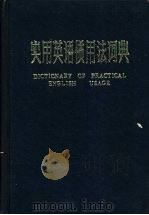《英语动词 语法和惯用法》
| 作者 | 黄子文编著 编者 |
|---|---|
| 出版 | 北京:商务印书馆 |
| 参考页数 | 186 |
| 出版时间 | 1981(求助前请核对) 目录预览 |
| ISBN号 | 9017·1046 — 求助条款 |
| PDF编号 | 86967698(仅供预览,未存储实际文件) |
| 求助格式 | 扫描PDF(若分多册发行,每次仅能受理1册) |

Introduction1
Chapter Ⅰ.Five Types of The English Verb6
Ⅰ.The Intransitive Type6
Ⅱ.The Linking Verb Type(Various Predicatives)7
CONTENTS9
(Headings in parentheses do not appear in the text;they serve only to indicate the contents concerned.)Preface9
Ⅲ.The Mono-transitive Type(Various Objects)10
Ⅳ.The Di-transitive Type13
(a)Convertible into Mono-transitive with“to”14
(b)Convertible into Mono-transitive with“for”14
Ⅴ.The Complex Transitive Type15
(c)Not very well Convertible into Mono-transitive15
(a)With a Noun(or Noun-equivalent)Complement16
(b)With an Adjective(or Adjective-equivalent)Complement17
(1)to show result17
(2)to show state17
(3)a past participle to show passive meaning18
(c)With a Verbal Complement to Indicate Action18
(1)the infinitive with“to”18
(2)the infinitive without“to”19
(3)the present participle20
(4)either the present participle or bare infinitive without appreciabie difference of meaning20
(5)either the present participle or infinitive with clear distinction of meaning21
(6)the infinitive“to be”22
(7)the preparatory“it”and complement23
Chapter Ⅱ.Tense25
(The Sixteen Tense Forms)25
(Dynamic Verbs and State Verbs)27
Ⅰ.Basic Use or Meaning of Each of the Tenses28
Ⅱ.Extended Use or Uses of the More Common Tense Forms34
A.The Simple Present Ternse34
B.The Present Progressive Tense38
C.The Present Perfect Tense38
D.The Present Perfect Progressive Tense39
E.The Past Tense Forms40
F.the Simple Future Tense41
G.The Future Progressive Tense42
H.The Future Perfect Tense42
I.The Past Simple Future Tense with“Would”43
J.The Past Future Perfect Tense43
Ⅲ.Time and Tense43
A.Denotation of Present Time43
B.Denotation of Habitual,Permanent or44
Repeated Action44
C.Denotation of Past Time45
D.Denotation of Future Time46
Ⅳ.Comparison Between Some of the Common Tenses47
Past and Continuing to the Present(Possibly to the Future)47
Absence of an Action Beginnmg in the47
E.Denotation of Duration of an Action or of47
Chapter Ⅲ.Special or Anomalous Verbs50
Ⅰ.What Special Verbs Are50
(Notional Verbs,Auxiliary Verbs,Modal Verbsand Non-special Verbs)50
(Outstanding Feature of a Special Verb)50
Other Peculiarities:50
A.Ability to Form the Tag Question52
B.Ability to Form Short Answers53
C.Ability to Form Elliptical Sentences55
than Precede the Speeial56
D.Ability to Form an Emphatic Affirmative56
E.A Mid-position Adverb to Follow Rather56
F.With Most Specials,No Inflexion for the57
Third Person Singular of the Present Tense57
Ⅱ.Special or Non-special?57
A.“Need”57
B.“Dare”59
C.“Used to”59
D.“Have”and“have to”60
A.Requests,Commands,Prohibitions,62
Invitations,Suggestions62
E.“Do”62
Ⅲ.Mood,Emotion and Attitude62
B.Promises,Threats and Refusals63
C.Wishes and Preferences64
D.Plans and Arrangements or Decisions64
E.Obligation and Necessity65
F.Permission66
G.Probability and Likelihood66
H.Possibility68
I.Ability and Achievement70
J.Determination and Resolve;Willingness71
K.Concession72
M.Characteristic Behaviour73
L.Surprise73
Ⅳ.Semi-modal Verbs74
Chapter Ⅳ.Voice76
(The Passive Form of the Verb)76
(Passive Counterparts of the Three Types of Transitive Verbs:the Retained Object and the Subject Complement)78
(The Conversion of Voice in Sentences with an Object“that”Clause)78
(Voice of Prepositional Verbs)80
(Voice of Adverbial Verbs)81
(Voice of Compound Prepositional Verbs)82
(Voice of Transitive Prepositional Verbs)83
(Passive Voice Emphasizes the Object,while Active Voice Emphasizes the Subject)84
B.Examples Showing Inconvertibility of an Idiom an Active Transitive Verb Has Entered into86
A.Examples Showing Transitive or Prepositional Verbs Which as a Rule Do not Occur in the Passive86
C.Exampies Showing Those Transitive Verbs Which Are Mostly,or Can Often Be,Used in the Passive87
D.Verbs,Active in Form but Passive in Meaning90
(A)Intransitive and Linking Verbs90
(B)Transitive Verbs90
(a)Finite Verbs90
(b)Non-finite Verbs91
(1)A Transitive Gerund91
(2)A Transitive or Prepositional-Verb Infinitive91
(The Indicative Mood,the Imperative Mood,and the Subjunctive Mood)93
Ⅰ.The Imperative Mood93
Cbapter Ⅴ.Mood93
Ⅱ.The Subjunctive Mood95
A.General95
B.The Subjunctive Present Tense98
C.Meaning of Subjunctive Mood100
(The Subjunctive Mood as Popularly Called Divisible into:)100
(A)The Pure Subjunctive101
(B)The Half Subjunctive103
(C)The Old-styled Subjunctive Present Tense105
(D)The False Subjunctive105
D.Subjunctive or Indicative?107
(A Few Practical Situations Enumerated and Contrasted)107
E.Conditions Expressed by Inversion111
F.Conclusion112
Chapter Ⅵ.The Non-finites113
Ⅰ.The Finite Verb versus the Non-finite113
Ⅱ.Agent of the Non-finite116
Ⅲ.Contrasts Between the Non-finites119
A.As Subject119
B.As Predicative120
C.As Object123
(A)of a Transitive Verb123
(B)of a Preposition123
(A)Transitive Present Participle versus Transitive Past Participle124
D.As Attributive124
(B)Intransitive Present Participle versus Intransitive Past Participle as Premodifier125
(C)Present Participle versus Gerund as Premodifier126
(D)Present Participle versus Infinitive127
(E)Infinitive versus Gerund or Preposition plus Gerund129
E.As Adverbial130
(A)The Participle and the Infinitive130
(B)“Go”plus Infinitive versus“Go”plus Present Participle133
F.Non-finites as Object Complements134
(Object Complement Following Verb“Have”)134
G.Non-finites as Independent Elements(Disjuncts)135
Ⅳ.Voice of the Non-finites137
Ⅴ.The Tense Forms of the Non-finites138
A.of the Predicative Infinitive139
B.of the-Complement Infinitive139
C.of the Adverbial Participle140
Ⅵ.The Adverbial Non-finite and the Adverbial Clause141
(Absolute Construction of the Participle)141
(Dangling Participle,Legitimate and Illegitimate)142
(Dangling Gerund and Dangling Adverbial Infinitive,Legitimate and Illegitimate)144
Ⅶ.The Non-finite Postmodifier and the Relative Clause146
A.The Present Participial Phrase146
B.The Past Participial Phrase147
C.The Infinitive Phrase148
Ⅷ.The Split Infinitive149
Ⅸ.The Bare Infinitive150
A.As Complement to Certain Verbs150
B.As Predicative152
C.After Modal Verbs152
D.After Certain Prepositions152
Ⅹ.The Elliptical Infinitive153
Ⅺ.The Half Gerund154
Ⅻ.Verbal Construction after“Rather than”and“As well as”157
Chapter Ⅶ.Verbs and Their Prepositions160
(General Remarks)160
(A)Omission of Preposition from Prepositional Verb Governing“that”Clause163
A.Intransitive Verbs Followed by Prepositions163
(C)Cases Where Omission of Preposition Will Produce a Difference in Meaning165
(B)Cases Where Omission of Preposition Produces No Difference in Meaning165
(D)Cases Where a Different Preposition Gives a Different Meaning to Verb169
(E)Cases Where a Different Preposition Gives No Appreciable Differencc of Meaning to Verb173
(F)Intransitive Verbs with Double Prepositional Phrases174
B.Transitive Verbs Followed by Prepositions175
(A)Mono-transitive Preposition Combinations Which Admit of Object Shuffling175
(B)Mono-transitive Preposition Combinations Which Are Liable to Abuses of object Shuffling176
Different Meaning to the Situation177
(a)with Verbs in the Active voice177
(C)Cases Where a Different Preposition Gives a177
(b)with Verbs in The Passive Voice178
(D)A Few Cases Where Mono-transitive Preposition Combinations May Become Other Mono-transitive or Di-transitive Constructions by Dropping the Preposition180
(E)Great Majority of Mono-transitive Preposition Constructions Are Fixed and Invariable180
(F)A Few Reflexive Mono-transitive Preposition Constructions,Which Are Fixed and Invariable181
C.The Verb“to be”Followed by Prepositions181
(A)“To be at”with Phrases182
(B)“To be in”with Phrases183
(C)“To be on”with Phrases183
(D)“To be out of”with Phrases184
(E)Miscellaneous“To be plus Preposition”Phrases184
D.Conclusion186
1981《英语动词 语法和惯用法》由于是年代较久的资料都绝版了,几乎不可能购买到实物。如果大家为了学习确实需要,可向博主求助其电子版PDF文件(由黄子文编著 1981 北京:商务印书馆 出版的版本) 。对合法合规的求助,我会当即受理并将下载地址发送给你。
高度相关资料
-

- 英语惯用法词典
- 1958 时代出版社
-

- 英语句型和惯用法
- 1981.03
-
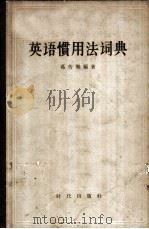
- 英语惯用法词典
- 1958
-

- 法语惯用语词典
- 1979.09 中外出版社出版
-

- 英语惯用法大词典
- 1994 北京:中国科学技术出版社
-

- 英语语法与惯用法
- 1999 长沙:国防科技大学出版社
-

- 法语惯用语词典
- 1976 中外出版社
-
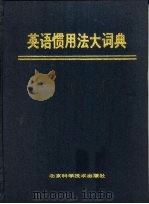
- 英语惯用法大词典
- 1995 北京:北京科学技术出版社
-

- 英语常用惯用法词典
- 1981 西安:陕西人民出版社
-
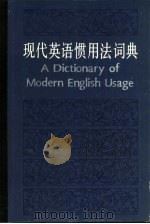
- 现代英语惯用法词典
- 1981 北京:商务印书馆
-

- 英语介词惯用法
- 1981 北京:北京师范大学出版社
-
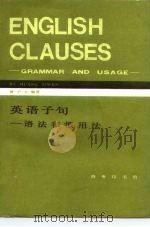
- 英语子句 语法和惯用法
- 1985 北京:商务印书馆
-
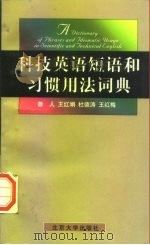
- 科技英语短语和习惯用法词典
- 1998 北京:北京大学出版社
-

- 英语句型和惯用法
- 1981 北京:商务印书馆
提示:百度云已更名为百度网盘(百度盘),天翼云盘、微盘下载地址……暂未提供。➥ PDF文字可复制化或转WORD
